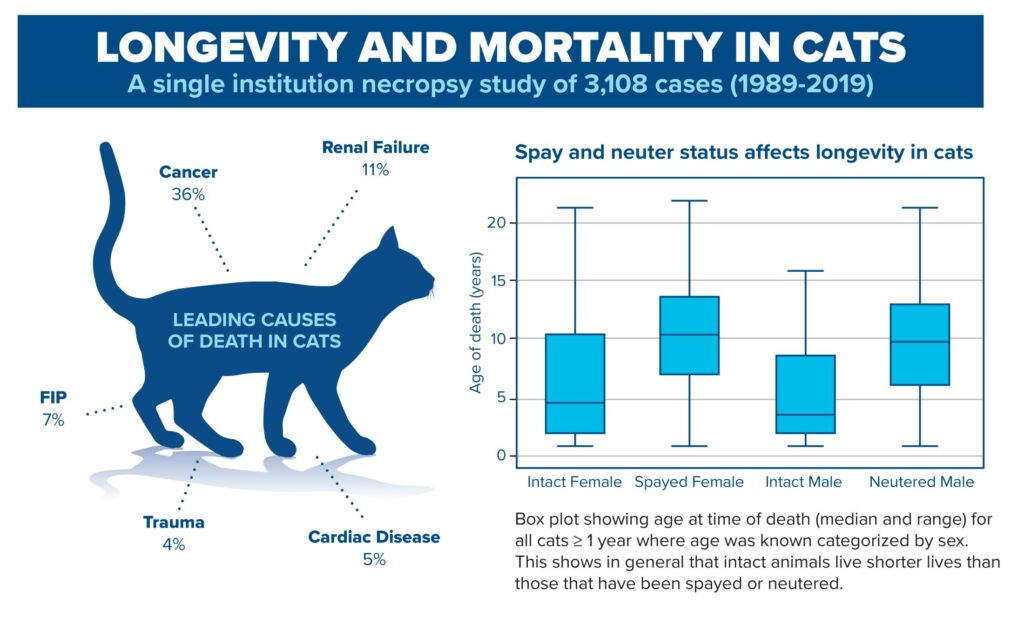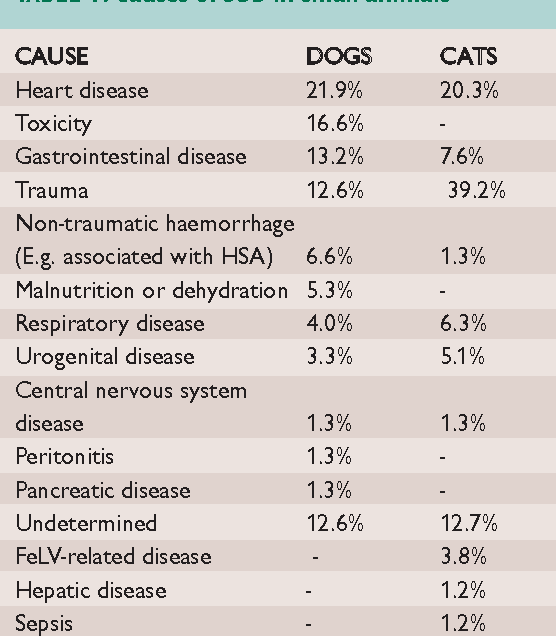
Experiencing the sudden loss of a beloved cat is one of the most heart-wrenching situations a pet lover can face. The pain of trying to comprehend such a sudden death can be overwhelming. It’s natural to search for answers, to reflect on what might have been done differently, and to wonder if there were underlying health issues that went unnoticed. This grief is especially profound when it involves a young cat. In this blog, we’ll explore some of the potential causes behind sudden cat deaths to help provide some clarity during this difficult time.

Feline Life Expectancy vs. Risk of Sudden Death
Cats typically live between 14 and 22 years, but their lifespan can vary significantly based on their lifestyle. Indoor-only cats generally have the longest life expectancy, benefiting from a safer environment. Cats that split their time between indoors and outdoors tend to have a shorter lifespan due to increased risks. Outdoor-only cats face the greatest challenges, including exposure to toxins, trauma, animal attacks, and diseases. However, it’s worth noting that some outdoor cats with strong genetics, a nutritious diet, and regular veterinary care can still enjoy a long, healthy life.

Possible Causes of Sudden Death in Cats
Unexpected or sudden cat deaths can be caused by a variety of factors. One crucial point to remember is that cats are adept at hiding their illnesses, a survival instinct that often means they can be sick for a long time before anyone notices. This can be particularly challenging for those who interact with their cats daily and might overlook subtle signs like weight loss, increased shedding, changes in sleep patterns, or a dull coat. As cats age, it’s easy to mistake symptoms like weight loss, reduced activity, or lethargy as just part of the aging process rather than signs of an underlying illness.

Causes of sudden death in cats include:
Trauma is a significant risk for cats, especially those that spend time outdoors, though it can affect any cat. Trauma can include incidents like being hit by a car, attacks from other animals, falls, or even accidents like being caught in a recliner. Outdoor cats are also more prone to getting lost, which increases their risk of injury. Microchipping can greatly enhance the chances of reuniting with your cat if they go missing. For more information on trauma and injuries, check out our guide.
Toxins pose another serious threat. While outdoor cats are more frequently exposed to toxins, indoor cats are not immune. Common toxins include antifreeze, potpourri, acetaminophen-containing medications, toxic plants like Easter lilies, and rat poison. Learn more about these dangers in our section on toxins in cats.
Heart disease in cats can be particularly insidious, sometimes presenting with no obvious symptoms until it’s too late. Some cats might show subtle signs like reduced playfulness, increased sleeping, decreased appetite, weight loss, or faster breathing. Heart disease, such as Hypertrophic Cardiomyopathy (HCM), can escalate quickly and lead to severe symptoms or sudden death. Feline heartworm disease is another condition that can cause abrupt fatalities. For a more in-depth look at heart disease in cats, refer to our dedicated resources.
Heart failure occurs when the heart can no longer meet the body’s demands, often leading to fluid buildup in the lungs, known as pulmonary edema. The most common cause of heart failure in cats is Hypertrophic Cardiomyopathy. Early signs can be subtle, such as a decreased appetite, reduced activity levels, and an increased respiratory rate. In more severe cases, a cat may appear to pant with its mouth open due to shortness of breath. Unfortunately, cats tend to hide their symptoms until heart failure reaches a critical and life-threatening stage.
Heart attacks, or myocardial infarctions, are less common in cats but can occur. This condition is typically associated with a blockage in the coronary arteries, which supply blood to the heart muscle. When these arteries become obstructed, the heart muscle doesn’t receive enough oxygen, leading to a heart attack. For more information on heart attacks in cats, visit our dedicated section.
Blood clots, or thromboembolism, can also be a serious issue, often related to underlying health problems like heart disease. These clots can travel to various parts of the body, including the brain, lungs, or back legs, and can result in sudden death.
Chronic Kidney Disease (CRF) is another prevalent condition, especially in older cats. When the kidneys fail, they cannot filter waste products from the blood, leading to a buildup of toxins. Symptoms include weight loss, decreased appetite, vomiting, and lethargy. Some cats may also drink more and urinate frequently. For more detailed information, check out our guide on Chronic Kidney Disease in Cats.
Feline urinary obstruction (UO) is a serious condition where the urinary tract becomes blocked, most commonly affecting male cats. This problem, sometimes referred to as a “blocked cat,” is marked by signs such as straining to urinate and crying. Without prompt treatment, it can be fatal within 72 hours. For more details on this condition, visit our page on urinary obstruction in cats.
Stroke, or cerebrovascular accident (CVA), in cats is similar to strokes in humans and occurs when the blood supply to the brain is disrupted. This can lead to sudden death and is often accompanied by symptoms like difficulty walking, weakness, falling to one side, paralysis, or seizures. Learn more about strokes in cats here.
Severe infections, or sepsis, can also be life-threatening. They can cause a range of symptoms including lethargy, loss of appetite, weight loss, dehydration, fever, and potentially sudden death.
Shock is another critical condition that involves dangerously low blood pressure and can result from various causes like allergic reactions, heart damage, severe infections, trauma, blood loss, toxins, or fluid loss. Shock can lead to rapid death in cats.
Uncontrolled diabetes can cause severe symptoms such as weakness, lethargy, vomiting, and even coma or death. For more information on diabetic ketoacidosis (DKA) in cats, check our resources.
Low blood sugar, or hypoglycemia, can also be fatal and might result from diabetes, trauma, or infections. Symptoms include lethargy, weakness, and seizures.
The loss of a beloved cat, especially one that seemed healthy and young, is incredibly hard to understand. It can be similar to sudden deaths in people, such as athletes or seemingly healthy individuals who die unexpectedly. While such losses are deeply painful, it’s important to remember that you provided your cat with a loving and fulfilling life. We hope this information brings some comfort during this difficult time.

